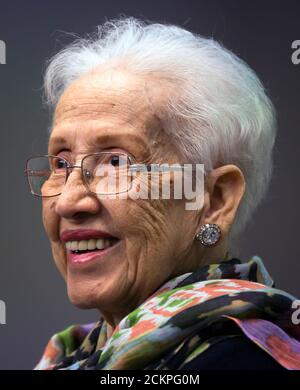

- KATHERINE JOHNSON NASA APOLLO HUMAN COMPUTER MOVIE MOVIE
- KATHERINE JOHNSON NASA APOLLO HUMAN COMPUTER MOVIE SERIES
Elizabeth first got interested in space after watching the movie Apollo 13 in 1996, and still wants to be an astronaut someday.Annie Easley started out as a computer at the Lewis Research Center in Cleveland, Ohio. Elizabeth is also a post-secondary instructor in communications and science since 2015. in Space Studies from the University of North Dakota, a Bachelor of Journalism from Canada's Carleton University and a Bachelor of History from Canada's Athabasca University. Her latest book, "Why Am I Taller?", is co-written with astronaut Dave Williams. Elizabeth's reporting includes multiple exclusives with the White House and Office of the Vice-President of the United States, an exclusive conversation with aspiring space tourist (and NSYNC bassist) Lance Bass, speaking several times with the International Space Station, witnessing five human spaceflight launches on two continents, working inside a spacesuit, and participating in a simulated Mars mission. She was contributing writer for (opens in new tab) for 10 years before joining full-time, freelancing since 2012. These lectures were given by engineers that later formed the Space Task Group, NACA's section on space travel.Įlizabeth Howell (she/her), Ph.D., is a staff writer in the spaceflight channel since 2022 covering diversity, education and gaming as well.
KATHERINE JOHNSON NASA APOLLO HUMAN COMPUTER MOVIE SERIES
For example, some of her math equations were used in a lecture series compendium called Notes on Space Technology. She began her career working with data from flight tests, but her life quickly changed after the Soviet Union launched the first satellite, Sputnik, in 1957. In 1953, when she was back in the workforce, Johnson joined the West Area Computing section at Langley. She quickly enrolled, but left to have children. Two years later, when the college chose to integrate its graduate schools, Johnson and two male students were offered spots. After graduating with highest honors, she started work as a schoolteacher in 1937.

She attended a high school on the campus of West Virginia State College by age 13, and began attending the college at age 18. Johnson showed early brilliance in West Virginia schools by being promoted several years ahead of her age, according to NASA (opens in new tab). Katherine Johnson did trajectory analysis for Alan Shepard's mission in 1961 and John Glenn's mission in 1962. Although described as a behind-the-scenes sort of worker, she helped many people get promoted or become supervisors. "She discovered that occasionally it was something as simple as a lack of a couple of courses, or perhaps the location of the individual, or perhaps the assignments given them, and of course, the ever present glass ceiling that most women seemed to encounter," Champine wrote.Īfter 30 years with NACA and NASA (at which point she was an engineer), Jackson decided to become an equal opportunity specialist to help women and minorities. She also tried to help other women advance in their career, according to the biography, by advising them on what educational opportunities to pursue. Her job was to extract the relevant data from flight tests.

Jackson began her career as a schoolteacher, and had several other jobs before joining NACA.Īs a computer with the all-black West Area Computing section, she was involved with wind tunnels and flight experiments. She graduated with high marks from high school and received a bachelor of science degree from the Hampton Institute in Mathematics and Physical Science, according to a biography written by Gloria R. Mary Jackson was a successful NASA engineer and advocate for women and minorities in the field.


 0 kommentar(er)
0 kommentar(er)
